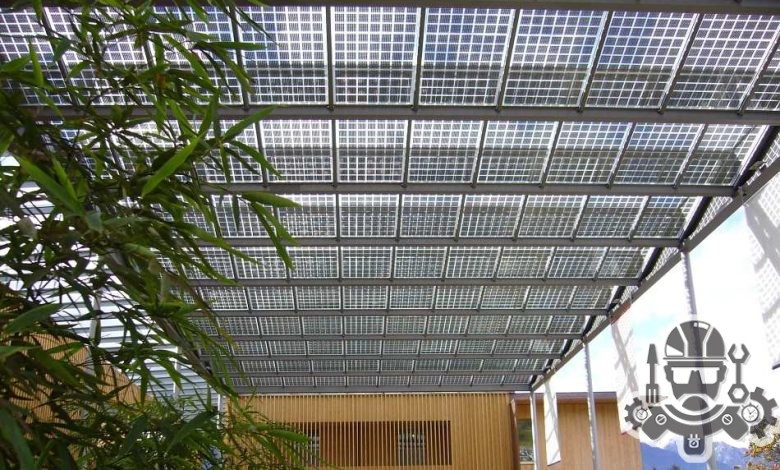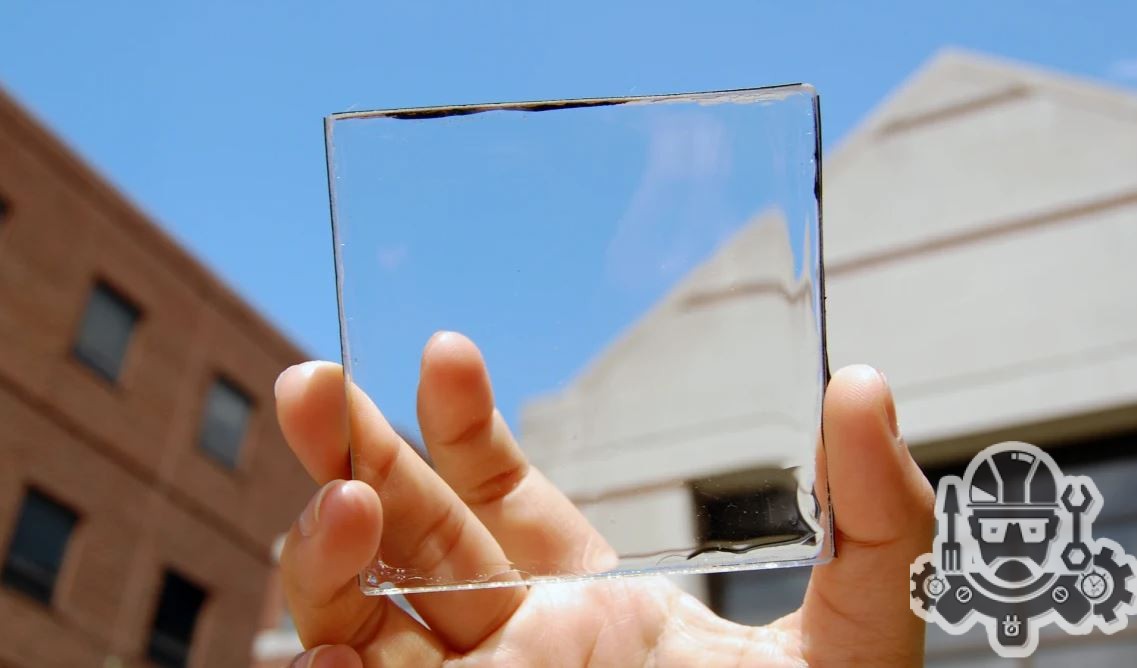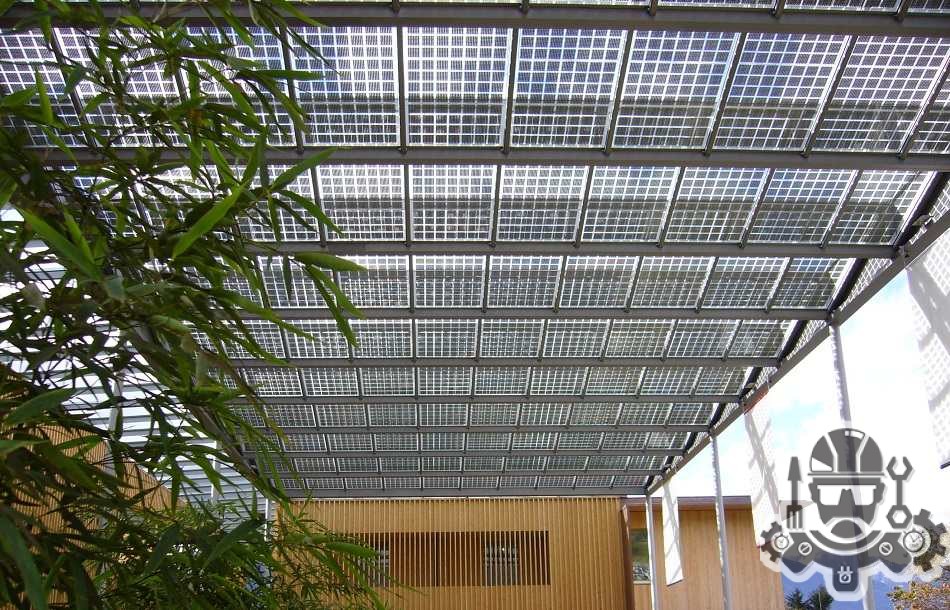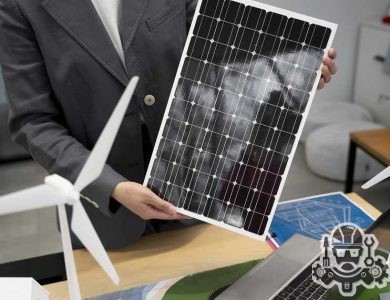
Have you ever heard of transparent solar panels? As the name suggests, these solar panels are actually transparent and allow light to pass through them. This innovative technology is a game-changer for the renewable energy industry and has been gaining popularity in recent years.
Solar panels are a type of renewable energy technology that converts sunlight into electricity. Traditional solar panels are made from photovoltaic cells that absorb sunlight and convert it into usable electricity. However, these panels are opaque and can only be used in areas where sunlight is abundant.
So, what makes transparent solar panels different? These panels are made from a special type of material called transparent conductive oxide (TCO). TCO is a thin film that is applied to glass or plastic surfaces to create a conductive layer that generates electricity. The result is a solar panel that can be used in a wide range of applications, from windows and skylights to automobiles and even mobile devices.
| Benefits of Transparent Solar Panels |
|---|
| 1. Dual-purpose functionality – as a window and electricity generator. |
| 2. Aesthetically pleasing design that can blend in with the surroundings. |
| 3. Reduction in electricity costs and carbon footprint. |
Transparent solar panels offer a range of benefits that traditional solar panels simply can’t match. For one, they offer dual-purpose functionality as both a window and an electricity generator. This means that they can be used in a wide range of applications, from residential and commercial buildings to automobiles and mobile devices. Additionally, transparent solar panels have an aesthetically pleasing design that can blend in with the surroundings and reduce the visual impact of solar panels.

Furthermore, using transparent solar panels can significantly reduce electricity costs and the carbon footprint of buildings and vehicles. This is because they generate clean energy from sunlight and can reduce the need for traditional energy sources. As a result, they are a sustainable and eco-friendly alternative to traditional solar panels.
As you can see, transparent solar panels are a promising new technology that has the potential to revolutionize the renewable energy industry. With their unique combination of functionality and design, they offer a range of benefits that cannot be matched by traditional solar panels.
Contents
- 1 Benefits Of Using Transparent Solar Panels
- 2 How Do Transparent Solar Panels Work?
- 3 Applications Of Transparent Solar Panels
- 4 Challenges Associated With Transparent Solar Panels
- 5 Advancements in Transparent Solar Panel Technology
- 6 Future Of Transparent Solar Panels in The Market
- 7 What Is The Cost Of Transparent Solar Panels?
Benefits Of Using Transparent Solar Panels
Using solar panels for renewable energy has become an increasingly popular way to reduce carbon footprint and save energy costs. However, conventional solar panels are often unappealing because of their bulky and opaque appearance. That’s where transparent solar panels come in – they offer an aesthetically pleasing alternative to traditional solar panels, while still providing the same benefits of solar energy.
Besides their aesthetic appeal, there are many other benefits of using transparent solar panels. One major advantage is their versatility in application. Transparent solar panels can be installed on vertical surfaces such as windows and skylights, integrating seamlessly into the design of a building. This innovation makes it possible for buildings to harness solar energy without having to surrender large portions of their surface area to conventional opaque solar panels.
| Benefits of using transparent solar panels: | |
|---|---|
| 1. Environmental benefits | 4. Reduced energy costs |
| 2. Versatile application | 5. Improved aesthetic appeal |
| 3. Durable and long-lasting | 6. Increased property value |
In addition, transparent solar panels are quite durable and long-lasting because of their capability to withstand harsh weather conditions, making them a reliable source of energy. This quality means that you can save money on maintenance and replacement costs in the long run. Furthermore, transparent solar panels can add value to your property, potentially increasing the resale value of your home or building.
Overall, the benefits of using transparent solar panels are numerous. Their environmental benefits are increasingly crucial in a world that is gravely affected by rising carbon emissions. Their versatile and aesthetically pleasing design, along with their ability to reduce energy costs and increase property value, make them a smart choice for any residential or commercial property interested in harnessing the power of renewable energy.
How Do Transparent Solar Panels Work?
Transparent solar panels are the latest innovation in the solar panel industry. They act as regular solar panels, with the added benefit of being see-through and transparent. They are made up of a series of thin film cells that are sandwiched between two layers of glass. Each cell is made of a combination of transparent conductive oxide and silicon, which allows light to pass through while absorbing solar energy. The transparent panel is capable of producing electricity, just like a conventional solar panel, but with the added benefit of allowing visible light to pass through, making it a highly sought-after product in the energy market today.
The efficiency of transparent solar panels is quite impressive, considering that visible light is only a small fraction of the electromagnetic spectrum. The energy conversion process works by allowing light to pass through the panel, while the cells in the panel absorb the photons and convert the energy into electricity. The electricity is then stored in a battery for future use. The solar panel also has a unique property that allows it to self-tint and become opaque when exposed to direct sunlight, which improves its performance by reducing the amount of heat lost during energy conversion. This technology has increased the efficiency of solar panels and has made them more accessible to many people globally.
| Advantages of Transparent Solar Panels | Disadvantages of Transparent Solar Panels |
|---|---|
|
|
Transparent solar panels can be used in a myriad of applications, including in construction, transportation, automotive and smart glass systems. The technology is still in its infancy, and manufacturers are working to improve the efficiency and durability of these panels. With the advancement of technology, it is likely that the cost of production will also decrease, making it more accessible to the general public. The future of transparent solar panels looks bright as it provides a tantalizing landscape of opportunities for energy and technology solutions.
Applications Of Transparent Solar Panels

Transparent solar panels are a new innovation in the field of renewable energy. Not only are they useful for harnessing the power of the sun, but they also offer numerous potential applications. One of the most significant application of transparent solar panels is their use in building exteriors and windows. Such panels can serve both as a source of electrical power and as a functional element of the building design.
Another application of transparent solar panels is in the automotive industry. These panels offer a unique way to power electric vehicles, making them even more eco-friendly. For instance, dashboards, roof, and even windows can be made of transparent solar panels. This can help to increase the range of electric cars and reduce the reliance on another power source such as coal-generated electricity or fossil fuels.
| Solar Panel | Application |
| 1 | Building exteriors and windows |
| 2 | Automotive |
| 3 | Consumer electronics |
Transparent solar panels can also be used in consumer electronics. From smartphones to tablets, these panels can be incorporated into a range of devices that require power. For instance, solar panels can be used to extend the battery life on these devices or even act as the primary power source. Such technology can reduce the number of charging cables needed, making these products more user-friendly.
Solar panels are increasingly being used to power everyday items, and transparent solar panels are no exception. Using them in everyday applications can lower your energy bill and increase your mobility without harming the environment.
Challenges Associated With Transparent Solar Panels
Transparent solar panels are a recent innovation in the field of renewable energy that has garnered a lot of attention in recent years. They are essentially solar panels that have been designed to be semi-transparent, allowing light to pass through them. These panels have the potential to revolutionize the way we use solar power, but as with any new technology, there are also challenges that come with their use.
One of the main challenges associated with transparent solar panels is their efficiency. Since these panels are not as opaque as traditional solar panels, they are not as efficient in capturing and converting sunlight into usable electricity. The technology is still relatively new, so scientists and engineers are working to improve the efficiency of transparent solar panels so that they can become a viable option for renewable energy.
Another challenge associated with transparent solar panels is their durability. Since these panels are more fragile than traditional solar panels, they can be more prone to damage and wear and tear over time. This can compromise their efficiency over the long run, and require more maintenance and repair than traditional solar panels.
| Pros | Cons |
|---|---|
| They allow light to pass through, making them ideal for use in buildings and other structures where natural light is desired. | They are less efficient than traditional solar panels. |
| They are aesthetically pleasing and can be incorporated into building designs in a stylish way. | They can be more fragile and prone to damage than traditional solar panels, requiring more maintenance and repair over time. |
| They have the potential to revolutionize the way we use solar power, especially in urban areas where space is at a premium. | They are still a relatively new technology and more research and development is needed to improve their efficiency, durability, and overall viability. |
In conclusion, transparent solar panels have the potential to provide a sustainable source of energy for a wide range of applications. However, there are still several challenges associated with their development, including their efficiency and durability. As research and development continue, it is likely that these challenges will be overcome, making transparent solar panels an increasingly viable option for renewable energy generation.
Advancements in Transparent Solar Panel Technology
The use of solar panels has increasingly become popular over the years as people seek to reduce their carbon footprint and embrace sustainable energy. However, conventional solar panels made from silicon are not always aesthetically appealing or practical, especially in areas where the sun is not always shining. This is where transparent solar panels come in. These are solar panels that have been designed to be transparent, allowing light to pass through them while still generating electricity. Over the years, advancements in technology have led to the development of more efficient transparent solar panels that can be used in a variety of settings.
One of the major advancements in transparent solar panel technology is the use of organic materials for their construction. Unlike traditional solar panels, organic solar cells can be produced at a lower cost by using printing techniques to apply the materials. This has led to the development of transparent solar films, which can be applied to various surfaces such as windows and even clothing. In addition, the use of organic materials allows for the creation of flexible and lightweight transparent solar panels that can be folded or bent, making them ideal for use in a variety of applications.
| Advantages of Transparent Solar Panels | Disadvantages of Transparent Solar Panels |
|---|---|
|
|
In addition to the use of organic materials, advancements in transparent solar panel technology have also led to the development of tandem solar cells. Tandem solar cells contain two or more layers of solar cells that work together to generate more electricity from the same amount of sunlight. This has resulted in the creation of more efficient transparent solar panels that can generate electricity even in areas where there is not a lot of sunlight.
The future of transparent solar panels in the market looks promising as more companies invest in the development of this technology. As the demand for sustainable energy solutions continues to grow, transparent solar panels are likely to become more widely available and affordable. With further advancements in technology, it is also possible that transparent solar panels will soon become as efficient or even more efficient than traditional solar panels, making them a viable alternative for generating electricity in a variety of settings.
Future Of Transparent Solar Panels in The Market
With a growing concern for the environment and an increasing demand for renewable energy, the solar industry has been constantly evolving. One such innovation in the field of solar technology is the transparent solar panel. These are see-through solar panels that can be installed on windows or other surfaces, allowing natural light to pass through while producing electricity at the same time. This technology has opened up a realm of possibilities for architects and designers to incorporate renewable energy in their structures, without compromising on aesthetics.
The future of transparent solar panels is promising, with various companies investing in research and development to maximize the efficiency of these panels. They are continuously working towards increasing the power output of these panels while maintaining their transparency. This can have a significant impact on the overall energy consumption of a building, reducing its dependence on conventional sources of energy and making it more sustainable.
| Benefits of Transparent Solar Panels |
|---|
|
However, there are also challenges associated with transparent solar panels, such as their lower efficiency compared to traditional solar panels. This means that they might not be able to produce as much power as conventional solar panels, which can limit their use in certain applications. Additionally, the cost of manufacturing these panels can be higher, which can make them less accessible to consumers.
Despite these challenges, the advancements in transparent solar panel technology are expected to drive down the cost and increase the efficiency of these panels. This could make transparent solar panels a more viable and sustainable option for consumers and architects alike in the near future. The potential applications of this technology are vast, and it could revolutionize the way we harness solar energy.
What Is The Cost Of Transparent Solar Panels?
The cost of transparent solar panels can vary depending on several factors such as the manufacturer, size, efficiency, and quantity purchased. Transparent solar panels, also known as solar windows or solar glass, are a relatively new technology, and their cost may still be higher compared to traditional opaque solar panels.
As of my knowledge cutoff in September 2021, transparent solar panels are generally more expensive than traditional solar panels due to their advanced design and manufacturing processes. The cost can range anywhere from $200 to $400 per square meter, or even higher for specialized or customized applications.
However, it’s important to note that prices may change over time as technology advances and economies of scale improve. Additionally, prices can vary between manufacturers and suppliers, so it’s advisable to consult with solar panel providers and obtain specific quotes for accurate pricing information.
Keep in mind that the financial viability of transparent solar panels should be evaluated based on factors such as energy generation potential, building integration benefits, and long-term cost savings. Transparent solar panels offer the advantage of combining energy generation with architectural design, making them suitable for applications such as building-integrated photovoltaics (BIPV) where aesthetics and energy production are both important.
For the most up-to-date and accurate pricing information, I recommend contacting solar panel manufacturers, suppliers, or solar energy system providers specializing in transparent solar panels. They can provide detailed information regarding pricing, specifications, and availability based on your specific requirements.
As of my knowledge cutoff in September 2021, transparent solar panels are generally more expensive than traditional solar panels due to their advanced design and manufacturing processes. The cost can range anywhere from $200 to $400 per square meter, or even higher for specialized or customized applications.
The use of solar panels has increasingly become popular over the years as people seek to reduce their carbon footprint and embrace sustainable energy. However, conventional solar panels made from silicon are not always aesthetically appealing or practical, especially in areas where the sun is not always shining.
Transparent solar panels are the latest innovation in the solar panel industry. They act as regular solar panels, with the added benefit of being see-through and transparent. They are made up of a series of thin film cells that are sandwiched between two layers of glass. Each cell is made of a combination of transparent conductive oxide and silicon, which allows light to pass through while absorbing solar energy. The transparent panel is capable of producing electricity, just like a conventional solar panel, but with the added benefit of allowing visible light to pass through, making it a highly sought-after product in the energy market today.
Using solar panels for renewable energy has become an increasingly popular way to reduce carbon footprint and save energy costs. However, conventional solar panels are often unappealing because of their bulky and opaque appearance. That's where transparent solar panels come in - they offer an aesthetically pleasing alternative to traditional solar panels, while still providing the same benefits of solar energy.



